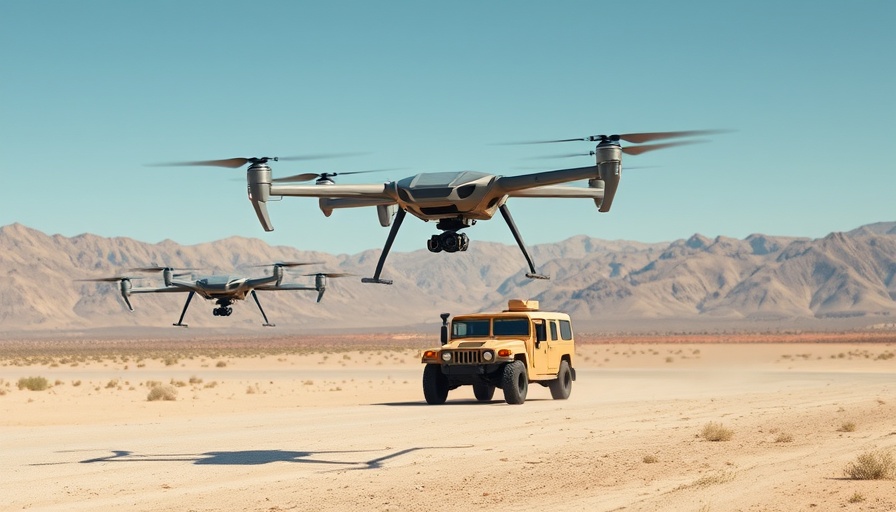
AV's P550 eVTOL: A New Era in Military Drone Technology
AeroVironment, Inc. (AV) announced a pivotal milestone in defense technology with its recent delivery of the P550 Group 2 eVTOL (Electric Vertical Takeoff and Landing) unmanned aircraft systems to the U.S. Army. This delivery forms part of the Long-Range Reconnaissance (LRR) program, designed to enhance operational capabilities for Transformation in Contact (TiC) brigades. The introduction of the P550 not only enriches the Army's technological arsenal but also exemplifies the advancements in unmanned systems that are capturing the interest of tech enthusiasts and industry professionals alike.
Enhancing Combat Readiness with Versatile Technology
The initial batch of P550 systems includes comprehensive training for operators, ensuring that the integration into Army units is smooth and effective. AV's commitment to empowering warfighters is evident in the design of the P550. Built from the ground up with a Modular Open Systems Approach (MOSA), it allows for rapid adaptation in dynamic combat environments. This flexibility ensures that the P550 can be configured for various missions by utilizing different payloads and technologies, thereby countering ever-evolving threats.
The Future of Military Drone Operations
As military operations continue to become more complex, drones like the P550 are at the forefront of innovation. With a payload capacity of up to 15 pounds and an endurance of up to five hours, this eVTOL system significantly enhances situational awareness, targeting, and strike capabilities of ground units. It embodies the latest in AI and autonomy, which promises smarter operation strategies—something that is becoming increasingly vital in modern warfare. Furthermore, its open architecture facilitates ongoing upgrades, keeping the system relevant amid rapid technological advancements.
Broader Implications for Drone Technology
The impact of the P550 isn’t limited to military applications. The advancements made for this drone can inspire innovations in civilian drone technology, paving the way for enhanced commercial UAV applications in various fields, including disaster response, surveillance, and agricultural monitoring. As drone technology evolves, the ability to rapidly adapt and integrate new capabilities will be crucial in maintaining a competitive edge, not just on the battlefield, but in everyday applications.
Challenges and Considerations for Regulation
However, with the rapid deployment and integration of drones like the P550 into military operations comes the task of regulations and ethical considerations. As more capabilities are granted to UAVs, there arises a dialogue within society regarding the boundaries of drone applications. Legislation must evolve concurrently, ensuring that safety and accountability are maintained without stifling innovation.
The rapid pace at which AV is fulfilling orders to match Army operational requirements suggests a bright future for both military and commercial drone technologies. The success of the P550 is a testament to the capabilities of unmanned systems and their continuing role in reshaping the landscape of aerial reconnaissance and combat strategy. As these systems grow more advanced, the conversation around their applications and regulations will undoubtedly deepen.
The arrival of the P550 into U.S. Army operations marks not just a technological achievement, but a definitive step towards a future where drones redefine both military and civilian operational strategies. It’s an invitation for tech enthusiasts and industry professionals to closely monitor the integration and evolution of such systems in the coming years.
 Add Row
Add Row  Add
Add 




Write A Comment